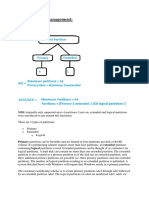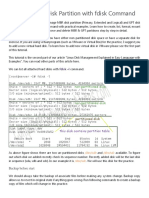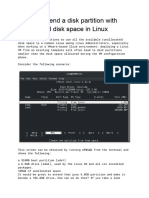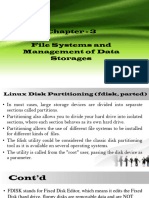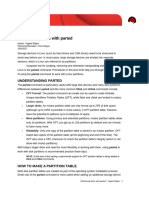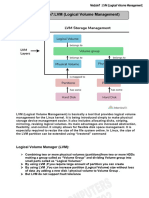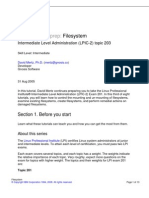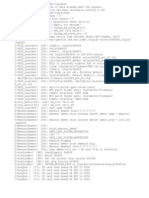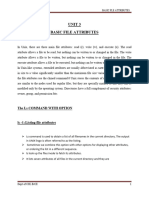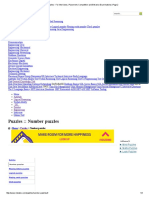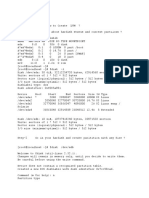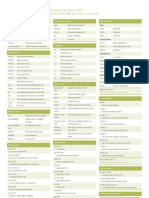0% found this document useful (0 votes)
17 views21 pagesManaging Partitioned and Creating Filesystem
The document provides a comprehensive guide on managing partitions and creating filesystems in Linux using utilities like fdisk and partprobe. It details the steps for creating, formatting, and mounting partitions, as well as how to delete them. Additionally, it explains how to update the partition table without rebooting and how to check filesystem types and mount points.
Uploaded by
abhisheksafeekaCopyright
© © All Rights Reserved
We take content rights seriously. If you suspect this is your content, claim it here.
Available Formats
Download as DOCX, PDF, TXT or read online on Scribd
0% found this document useful (0 votes)
17 views21 pagesManaging Partitioned and Creating Filesystem
The document provides a comprehensive guide on managing partitions and creating filesystems in Linux using utilities like fdisk and partprobe. It details the steps for creating, formatting, and mounting partitions, as well as how to delete them. Additionally, it explains how to update the partition table without rebooting and how to check filesystem types and mount points.
Uploaded by
abhisheksafeekaCopyright
© © All Rights Reserved
We take content rights seriously. If you suspect this is your content, claim it here.
Available Formats
Download as DOCX, PDF, TXT or read online on Scribd
/ 21











